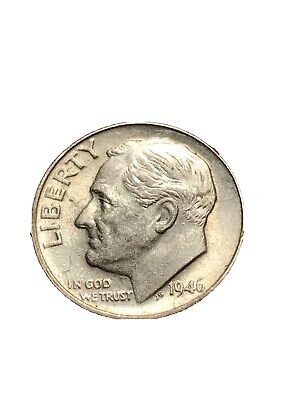The Roosevelt Dime is a coin rich in history and integral to any numismatic collection. Whether you’re a seasoned collector or just starting, understanding how to grade Roosevelt Dimes can enhance your appreciation and ensure you recognize their value effectively. This guide explores the Roosevelt Dime’s historical context, grading specifics, and how to identify valuable pieces.
Historical Context
The Roosevelt Dime was introduced in 1946, a year after the death of President Franklin D. Roosevelt, to honor his legacy and contributions, particularly his role in founding the March of Dimes. This coin replaced the Mercury Dime, which had been in circulation since 1916. The introduction of the Roosevelt Dime was significant as it marked a shift in design and symbolized a nation’s gratitude towards a beloved leader. For collectors, the Roosevelt Dime isn’t just a currency but a piece of history, reflecting mid-20th-century America.

Roosevelt Dime Value Chart
The value of a Roosevelt Dime varies based on its condition. Below is a chart that outlines the estimated value range for different grades:
| Condition | Estimated Value Range |
|---|---|
| Good (G) | $1.00 – $2.00 |
| Fine (F) | $2.00 – $3.00 |
| Extra Fine (XF45) | $3.00 – $5.00 |
| About Uncirculated (AU) | $5.00 – $7.00 |
| Brilliant Uncirculated (BU) | $7.00 – $15.00 |
| MS66 | $30.00 – $50.00 |
Roosevelt Dime Obverse and Reverse Design
The obverse of the Roosevelt Dime features a portrait of Franklin D. Roosevelt, designed by John R. Sinnock. In Mint State condition, the portrait is sharp with no wear on the high points such as the cheek and hair. In Fine condition, slight wear is noticeable, particularly on the cheek and hair. In circulated condition, the portrait shows significant wear, with more pronounced flattening of the design.
The reverse depicts a torch, olive branch, and oak branch, symbolizing liberty, peace, and strength. In Mint State, these elements are detailed and crisp, while in Fine condition, they exhibit minor wear. In circulated coins, the details are less distinct.
The edge of the dime is reeded, with 118 reeds in total, providing a tactile feature that is consistent across its conditions.
Roosevelt Dime Composition and Physical Features
Initially, the Roosevelt Dime was composed of 90% silver and 10% copper until 1964. Post-1964, it shifted to a clad composition consisting of a copper core with an outer layer of 75% copper and 25% nickel. The dime measures 17.91 mm in diameter and weighs 2.27 grams, regardless of its composition.
Rare Issues and Error Coins
Roosevelt Dimes have had their share of rare issues and errors, which can be quite valuable. Some known errors include the 1968 No-S Proof Dime and the 1982 No-P Dime, which can be worth hundreds of dollars in good condition. Error coins are sought after for their rarity and uniqueness, making them an exciting addition to any collection.
Special Releases
Special releases of the Roosevelt Dime include proof sets and special mint sets. Proof coins are struck with higher detail and a mirror-like finish, adding a level of desirability among collectors. These are often worth more than their circulated counterparts.
How to Identify a Valuable Roosevelt Dime
Identifying a valuable Roosevelt Dime involves examining its condition, mint mark, and any unique characteristics such as errors. Pay attention to the sharpness of the design, presence of any mint marks, and whether the dime has any known errors. A magnifying glass and a good light source can aid in spotting these features.
Grading Your Own Roosevelt Dimes
Amateur numismatists can grade Roosevelt Dimes by closely examining the wear on the obverse and reverse designs, using the value chart as a reference. A coin in Good condition will show significant wear, with the major design elements still visible. In Fine condition, some details are visible with wear on the high points. Extra Fine dimes show minor wear, and About Uncirculated coins have very slight traces of wear.
For a precise grading, consider consulting a professional or referring to a comprehensive grading guide, which can offer more detailed criteria for each grade level.
With careful examination and some practice, grading can become a rewarding part of collecting Roosevelt Dimes, enhancing both your knowledge and the value of your collection.